

Made Bayak is a Balinese contemporary artist with a strong social conscience, dedicating his creative energies to activities that directly engage with the community. He pursued his studies at the Indonesian Art Institute (ISI) in Denpasar from 1999 to 2006, where he met his future wife, Komang Kartika Dewi, a graduate from ISI who teaches art at Sukawati Junior High School. The couple has one son, Damar Langit Timur, who also shows great artistic potential, beginning to create figurative representations as early as two years old.
Bayak attributes his talent to his mother's family lineage. His grandfather and great-grandfather were readers and writers of lontar (Balinese ancient manuscripts). Observing them create Rajah (mystical drawings in Balinese culture) as a child has profoundly influenced his artistic practice today.
Since 2010, he has been a member of Sanggar Anak Tanguh (Building Strong Children) in Banjar Wangbung, where he lives with his family. This organization was established by local parents to address the shortcomings in Bali's public education system, focusing on the holistic development of children through weekly workshops. Every Sunday morning, they facilitate art classes aimed at nurturing and enhancing the children's innate creative abilities.
In 2010, Bayak began developing a long-term project called "PLASTICOLOGY," through which he experiments with paintings created from the pervasive plastic waste found throughout Bali. He has cultivated a large social network that provides opportunities for community outreach events. These events combine various forms of creative expression and aim to raise awareness among youths from both Indonesia and Bali’s international community about pressing social and environmental issues. To this day, he continues to lead self-funded presentations and workshops for his PLASTICOLOGY art project with schools and community groups. In addition to his art, Made Bayak is also a guitarist in the local hardcore/heavy metal band named AMPLITHERAPY. The band's mission is to communicate with the younger generation and be a voice for them through the lyrical content of their music, which is written in Balinese, as well as through their social activism.
Bayak regularly exhibits his work in Bali and has recently showcased his pieces in countries such as Italy, the USA, Switzerland, Germany, and Poland. In 2013, he was also nominated as a finalist for the prestigious Sovereign Art Prize in Singapore.
Lahir dan besar dalam ruang hidup kepulauan, merupakan sebuah anugerah yang sangat luar biasa bagi saya, berada dalam sebuah cosmology pulau kecil yang menjadi bagian tata semesta yang jauh lebih besar, menumbuhkan kesadaran akan pentingnya menjaga tata kelola cosmology tersebut, baik itu sekala kecil yang nantinya akan bisa mempengaruhi sekala yang lebih besar.
Didalam tubuh manusia memiliki cosmology yang merupakan semesta kecil, ada pembagian ruang sesuai dengan tugas dan fungsinya untuk menjaga kelangsungan hidup, bagian-bagian tersebut saling berkait satu sama lain, bagian Hulu dan Hilir/atas-bawah, kepala dan kaki, Gunung dan lautan, maka jangan pernah menyepelekan jika bagian kaki sakit, karena nanti pasti akan berpengaruh terhadap kepala, begitu juga jika lautan rusak, di area penggunungan juga akan terpengaruhi, begitu juga sebaliknya.
Semua alur alamiah itu di Bali sebut Segara Gunung, sebuah siklus alami didalam semesta dan terjadi juga disemesta kecil dalam tubuh kita. Diberbagai tempat siklus itu sedang terganggu sekarang oleh polusi, oleh material plastik dan sintetik yang mencemari lingkungan udara, tanah, air, demikian didalam tubuh kita sekarang tercemar oleh zat-zat yang berbahan kimia melalui makanan dan obat-obatan yang mengganggu proses alami dalam tubuh dan bahkan banyak bergantung oleh zat-zat baru tersebut.
Budaya konsuptif hari ini sangat mempengaruhi apa yang kita hasilkan setelah mengkonsumsi, ketidak siapan kita dalam mengolah hasil pasca konsumsi tersebut akan membuat masalah baru bagi lingkungan dan mengancam keberlangsungan keseimbangan alam.
Saya tertarik melihat dan ingin meneliti bagaimana system penanganan limbah plastic dan sintetik yang ada di pulau Bintan dengan masyarakat, budaya dan keperyaannya disana, juga melakukan presentasi project dan workshop dengan anak-sekolah menengah dan khususnya pada pulau Nikoi yang sudah bisa dengan maksimal mengelola limbah yang dihasilkan oleh komunitas kecil yang ada disana, semua itu untuk menjadi bahan studi saya dan bisa lebih faham melihat kasus yang terjadi di pulau saya sendiri yaitu pulau Bali dan siapa tahu bisa menjadi bahan studi yang menghasilkan solusi bagi persoalan yang terjadi di tempat atau pulau lainya.
Juga saya tertarik ingin melihat tentang bentang alam dan hutan yang menjadi bagian integral dari pulau Nikoi dengan specifikasi tumbuhan yang terpelihara disana.
Tentunya saya juga akan melakukan kegiatan workshop dan berkarya bersama yang melibatkan komunitas yang ada di pulau Bintan dan para pengunjung dan staff yang ada di pulau Nikoi juga saya harapkan bisa menjadi bagian dari dalam kegiatan residensi seni ini.
***
Being born and raised in an island living space is an extraordinary gift for me, being in a small island cosmology that is part of a much larger universe, fostering awareness of the importance of maintaining the governance of the cosmology, both on a small scale that will later be able to influence a larger scale.
In the human body there is a cosmology which is a small universe, there is a division of space according to its duties and functions to maintain survival, these parts are interrelated with each other, the Upstream and Downstream/top-bottom, head and feet, Mountains and oceans, so never underestimate if the feet hurt, because later it will definitely affect the head, likewise if the ocean is damaged, the mountainous area will also be affected, and vice versa.
All of these natural flows in Bali are called Segara Gunung, a natural cycle in the universe and also occurs in the small universe in our bodies. In many places, this cycle is being disrupted now by pollution, by plastic and synthetic materials that pollute the air, land and water environment, and in the same way, our bodies are now polluted by chemical substances through food and medicines that disrupt the natural processes in the body and many are even dependent on these new substances.
Today's consumer culture greatly influences what we produce. Our unpreparedness in processing post-consumption results will create new environmental problems that threaten the sustainability of the balance of nature.
I am interested in seeing and want to research how the plastic and synthetic waste handling system on Bintan Island with the community, culture and beliefs there, also conducting project presentations and workshops with high school children and especially on Nikoi Island who have been able to manage waste produced by the small community there optimally, all of that to be my study material and to be able to understand better the cases that occur on my island, namely Bali, and who knows it can be a study material that produces solutions to problems that arise in other places or islands.
I am also interested in seeing the landscape and forests that are an integral part of Nikoi Island with the specifications of plants maintained there. I will also conduct workshop activities and work together involving the community on Bintan Island, and I also hope that visitors and staff on Nikoi Island can be part of this Ubah Rumah art residency activity.
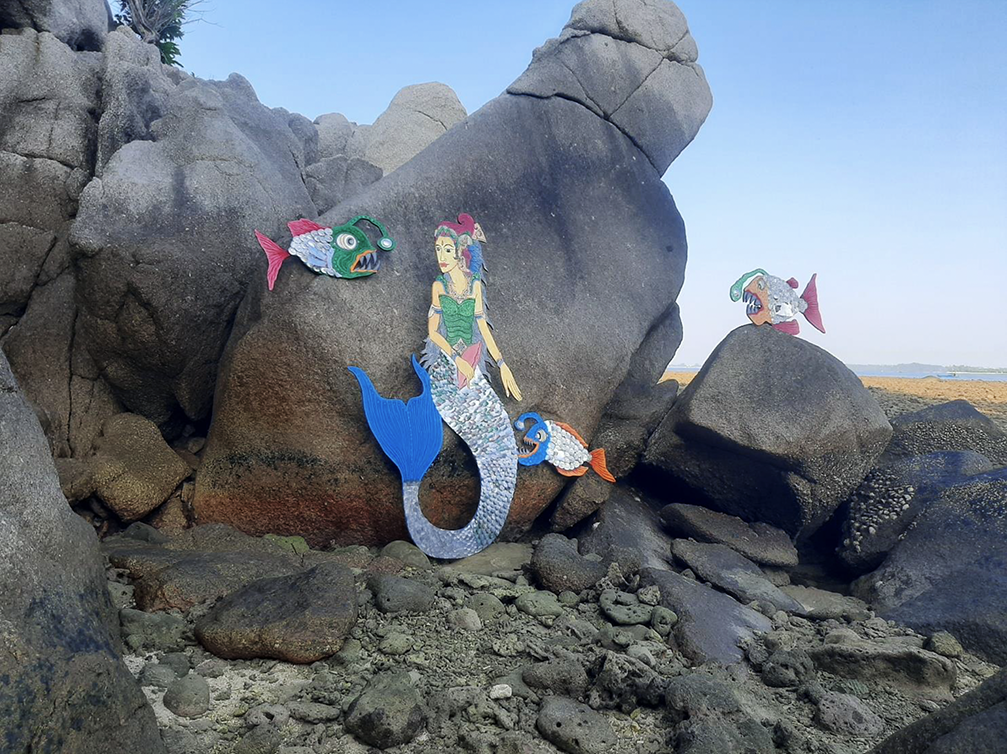
Mermaid stories have been around for thousands of years and span cultures around the world, from coastal settlements in Ireland to the Karoo Desert in South Africa. How old mermaid stories are in society is difficult to know, but they are thought to have been around since humans first encountered creatures in the sea.
The imagination, stories, legends, and tales of mermaids have filled space and time. These tales have accompanied many life stories, and many of our visual memories are about these stories. Through the medium of art and this workshop, I aim to explore the stories and memories of each participant about the mermaid legend in their respective cultural background.
Archaeologists have found a story of a half-human, half-fish creature in Mesopotamian mythology that is more than 5,000 years old about Oannes, the male fish god. One of the earliest mermaid legends emerged in Syria around 1,000 BC when the goddess Atargatis
plunged into a lake to transform herself into a fish. Because of her extraordinary beauty, the gods only transformed Atargatis' lower body into a fish. While her upper body remained human. Archaeologists have found Atargatis figures on ancient temples, statues, and coins. In modern literature, the most popular depiction of mermaids comes from the fairy tale The Little Mermaid by Danish author Hans Christian Andersen. The tale tells the story of a mermaid who longs for a normal life with humans on land. The story was adapted into the Disney cartoon The Little Mermaid in 1989.
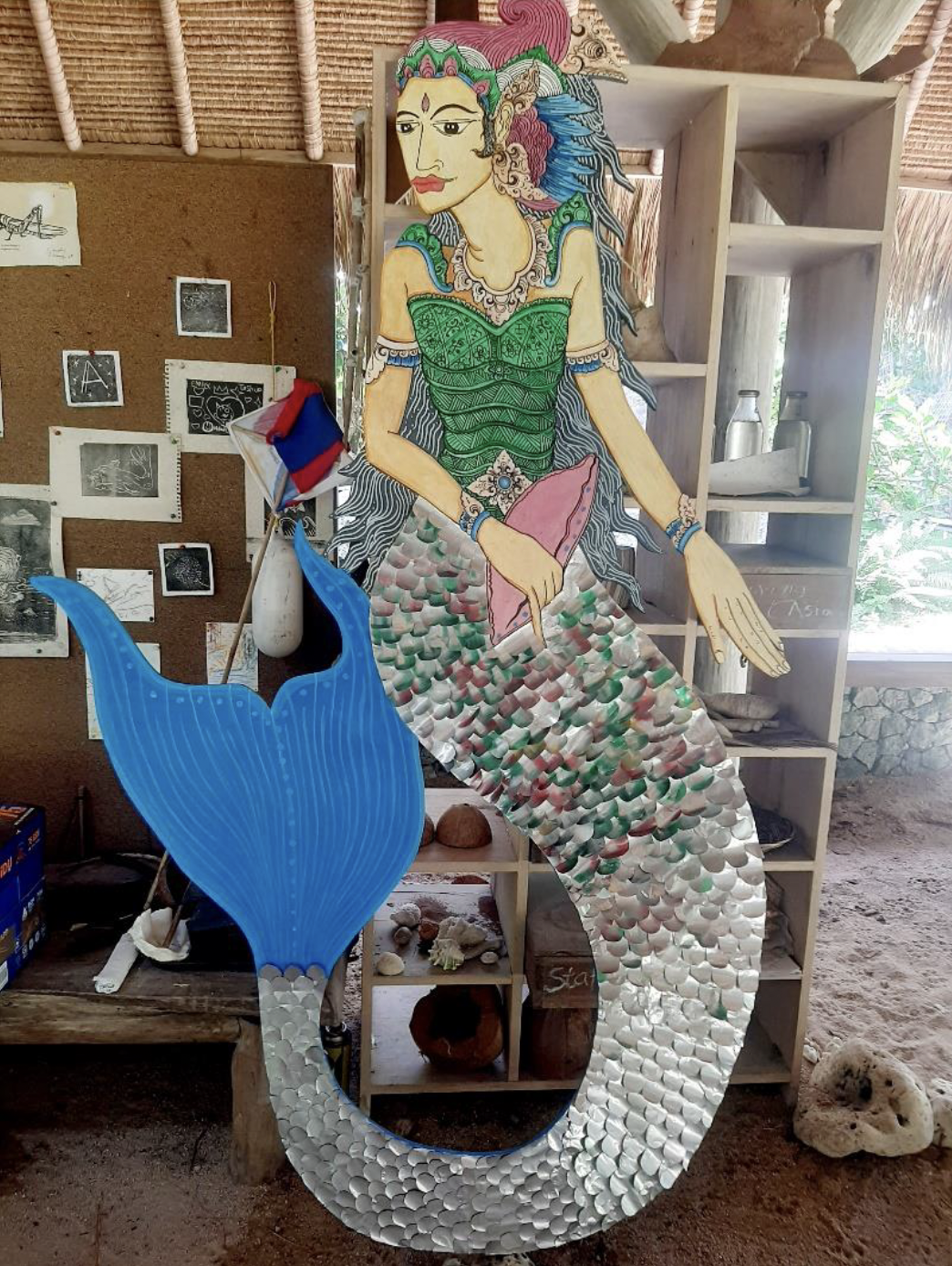
• Beauty and Natural Beauty:
Mermaids are often depicted as incredibly beautiful and graceful creatures, symbolising the beauty and wonder of the underwater world.
• Power and Sea Life:
Mermaids are also associated with the power and life of the sea, as well as the ability to interact with other sea creatures.
• Desire for Transformation:
Some mermaid stories highlight the creature’s desire to transform into a human, symbolising the desire to transcend limitations and achieve a different life.
• Healing and Hope:
In some cultures, mermaid tears are believed to possess healing powers and can bring good luck, particularly in matters of love.
Overall, mermaid stories in Indonesia offer a variety of interpretations and meanings, reflecting the richness of Indonesian culture and beliefs about the underwater world and the magical creatures that inhabit it, as well as its vast and strong maritime and archipelagic traditions.
During this Ubah Rumah residency period at Nikoi, I wanted to bring these stories and tales to life again in the minds of the workshop participants and anyone who views the artworks later. The story that introduces an awareness of ecology and environmental conservation is important for the sustainability of our home on this earth. Awareness that is built with creativity, fun, art and direct action.
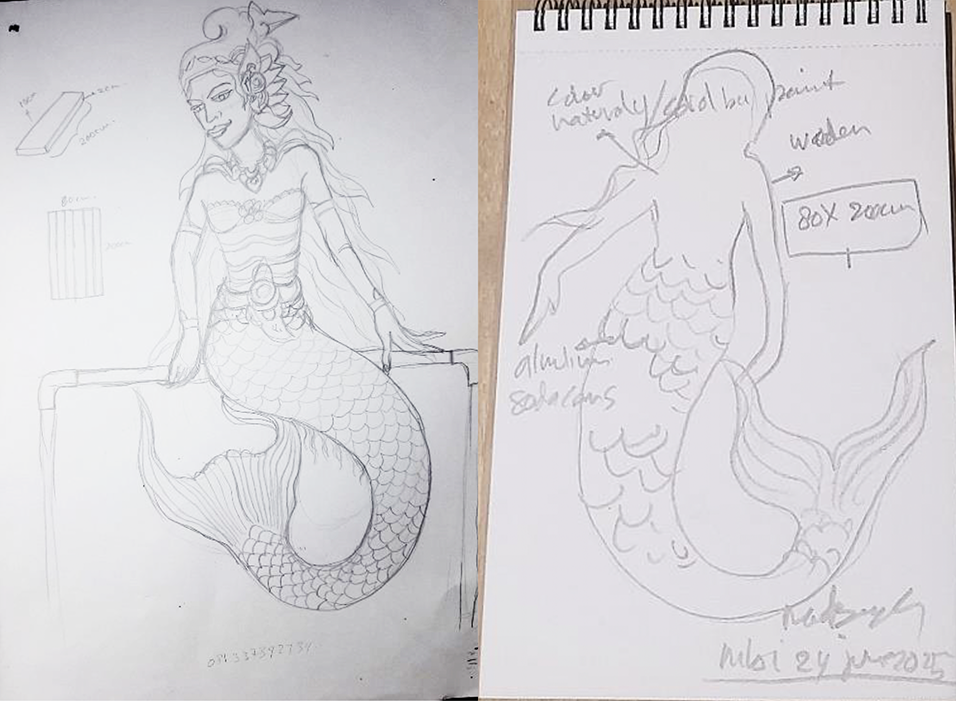

The primary concern of this residency program is to examine the issue of collective memory in island communities, focusing on the stories, legends, and myths that have filled the living spaces of nations that have existed long before us.This includes exploring how these narratives can coexist with nature, particularly the ocean, without excessive exploitation. One of the stories that fills the space of memory is the story of the mermaid (dugong), and it turns out that this memory is not only found in our islands in Indonesia but also in the memories and stories of people throughout the world's cultures. Then, I combined my own cultural background with the creation of the main work in this program, resulting in a complete work with content and messages that reflect what is happening to our islands and the condition of the sea, which is starting to become polluted.
The residency program is a space for pause, reflection, and a means for me as an artist to immerse myself in a new environment, meet new people, and engage with communities of different cultural backgrounds. I was able to step outside the culture and environment where I grew up and was raised, which is important for me, as it allows me to see many problems more clearly from various perspectives. By presenting an art project and engaging in direct conversations and a series of workshops with the community and visitors at Nikoi, I gained many new perspectives on art and the artistic practices I have been working on. Being in a pristine island environment gives me a meditative space, both physically and mentally. Time feels slow, thoughts are clear, and the energy and frequency of nature are so great that I can easily sense it, even before my friends on the island shared a lot with me and showed me the points of natural energy. It turns out that my feelings and intuition can already capture that frequency.
From the beginning, the proposal I submitted for this program was related to the Plasticology art project that I had worked on in Bali, working using unused materials to reflect today's conditions and situations. That's why the scales on mermaids and fish use soda cans as a symbol of post-consumer objects, which, if not processed properly, can pollute and threaten the ecosystem and environment.

I hold workshops with guests/children at Nikoi daily. Guests or their children are welcome to participate in responding to the theme of the work, or simply want to draw and colour freely. As an artist, I want to provide an opportunity for anyone interested in the process and residency program to respond to ideas and concepts. The goal is to gain new experiences and be filled with joy. My workshops with children or guests invite them to reinterpret what we consider waste. Sometimes, our mindset becomes stuck, and we can't do anything with it. Through creativity, I want to encourage and change the way we think about objects or waste. It turns out that it can be turned into art objects that convey a strong message of environmental awareness.

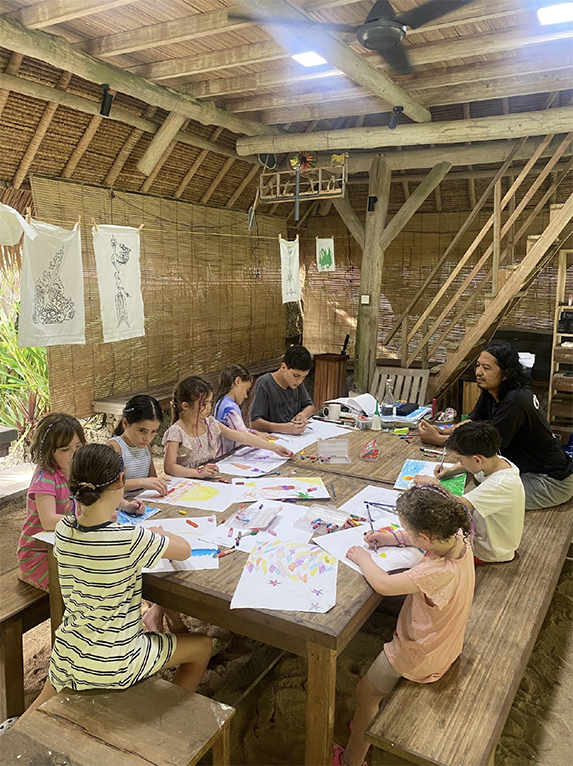
I held this activity the day after arriving on the island. I presented my project to the local community as a way to introduce myself and the activities I would be pursuing during the art residency program on Nikoi Island. I held the sharing session four weeks into the program, visiting an arts community called Samesmart in downtown Tanjung Pinang. They are young people with diverse educational backgrounds but united by their passion for art. Their regular activities include working together at their base camp or engaging in outdoor activities while creating their artwork. They also frequently hold events in public areas to introduce their community to the public. Mural creation is also a common activity for them when invited to events in their city.
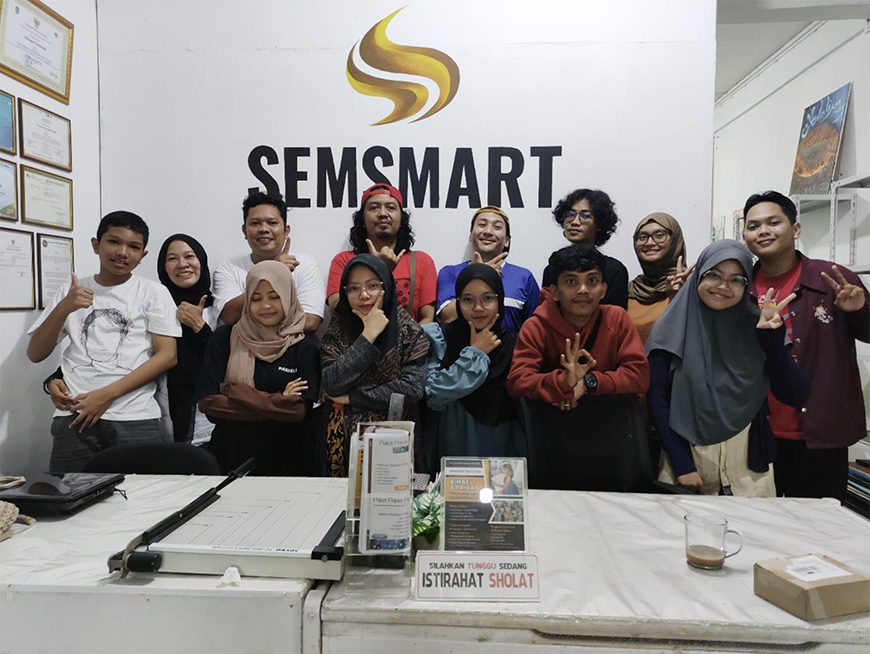
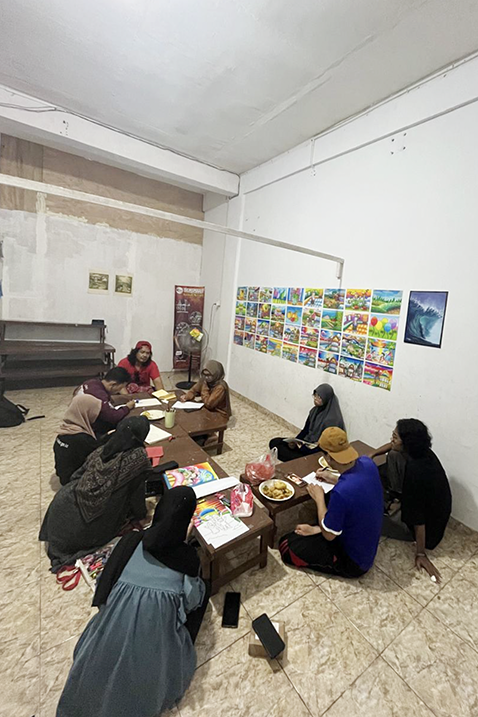
In addition to working on my main project, in between studio activities, I make brief sketches on location, using various objects on Nikoi and Cempedak Islands. These brief sketches serve as a social memory and experience. While I could have done them with my phone or DSLR camera, hand-drawn sketches hone my artist's sensitivity to capturing the character of objects, things, and people.
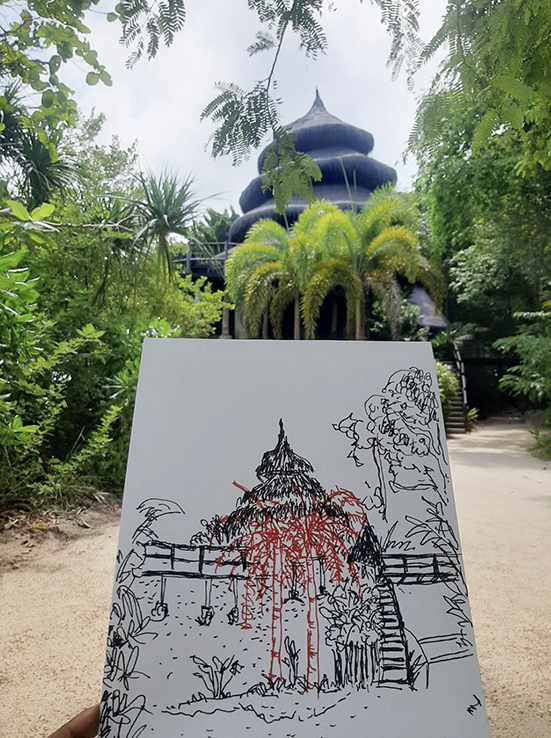

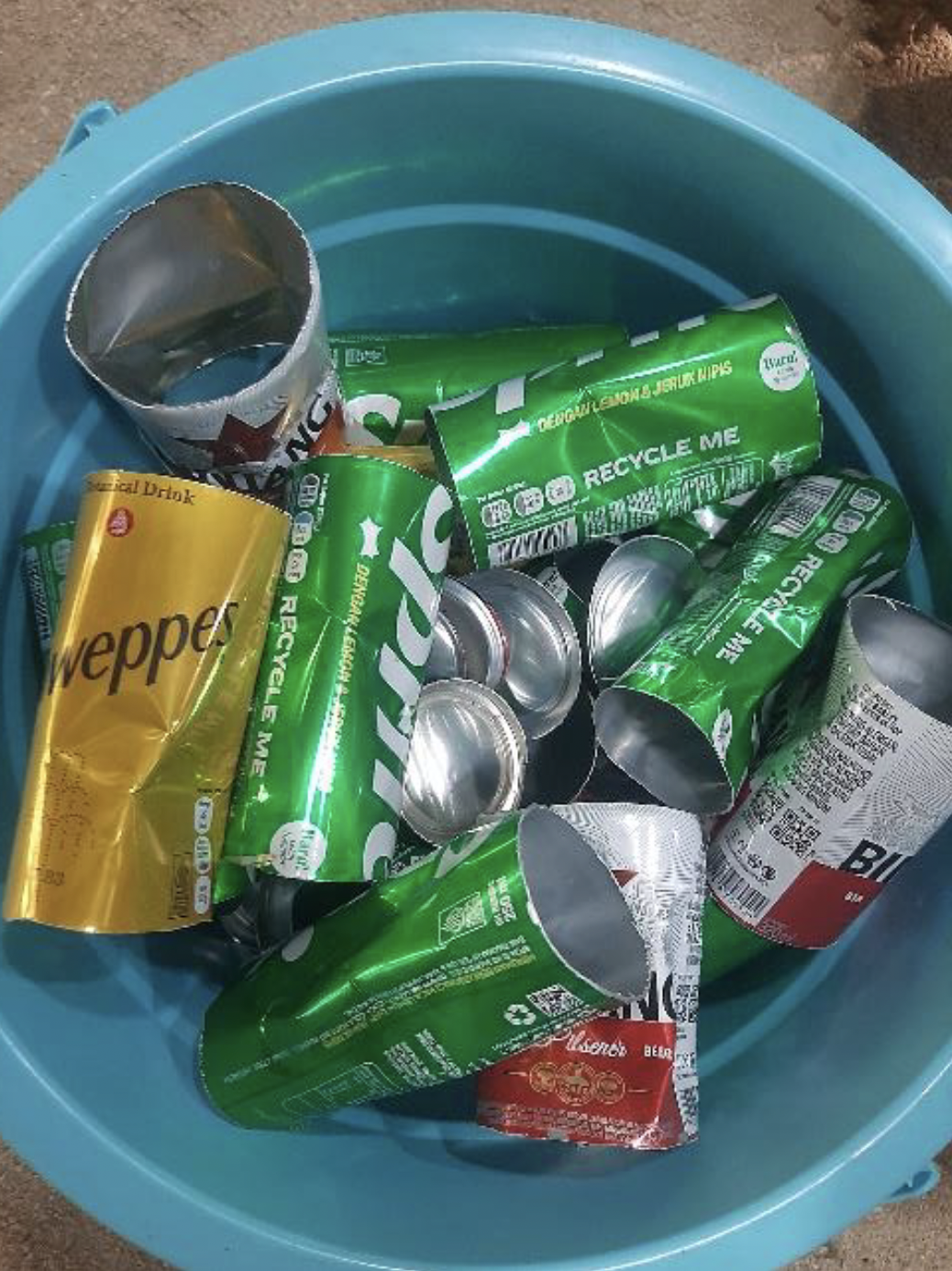
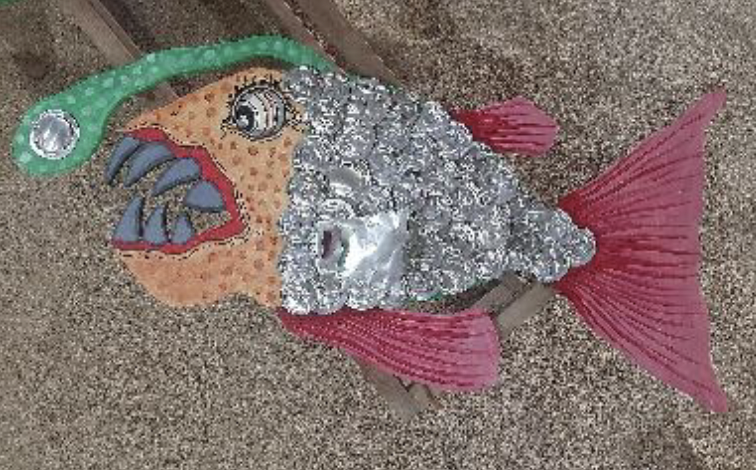
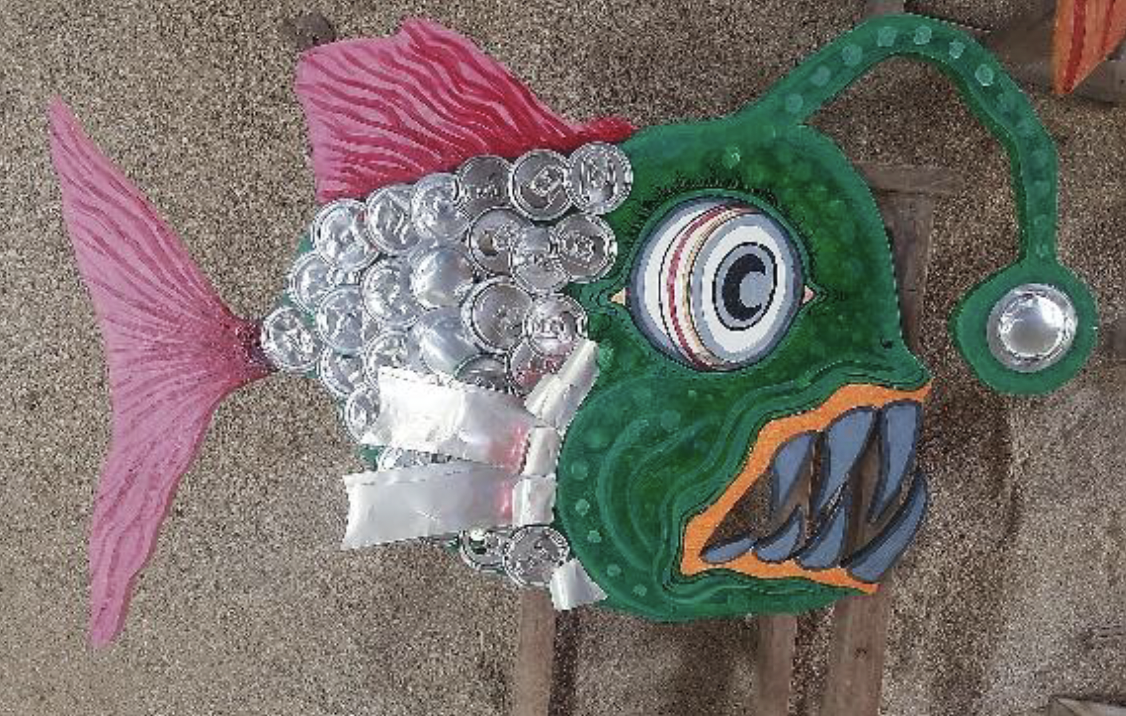

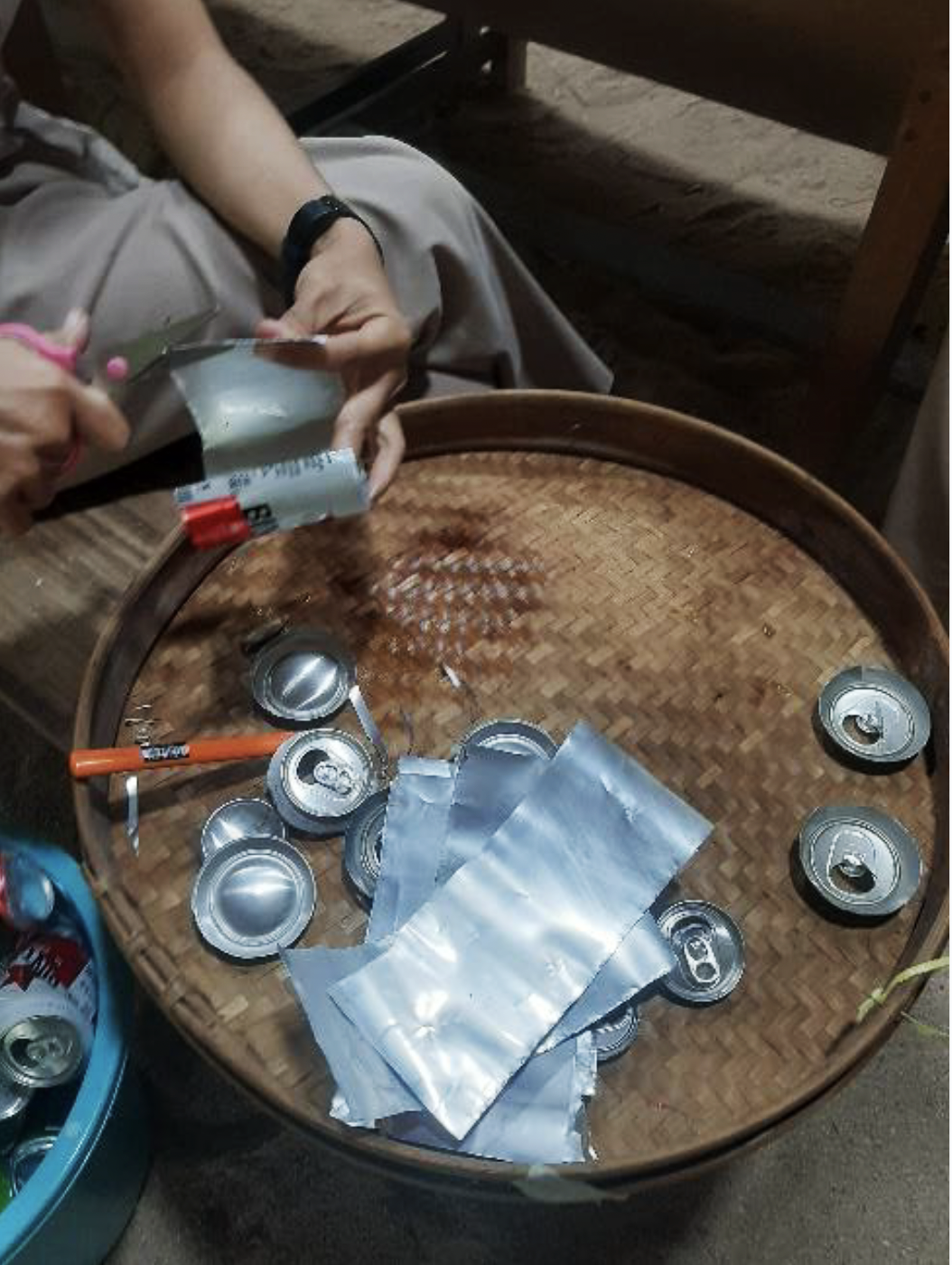

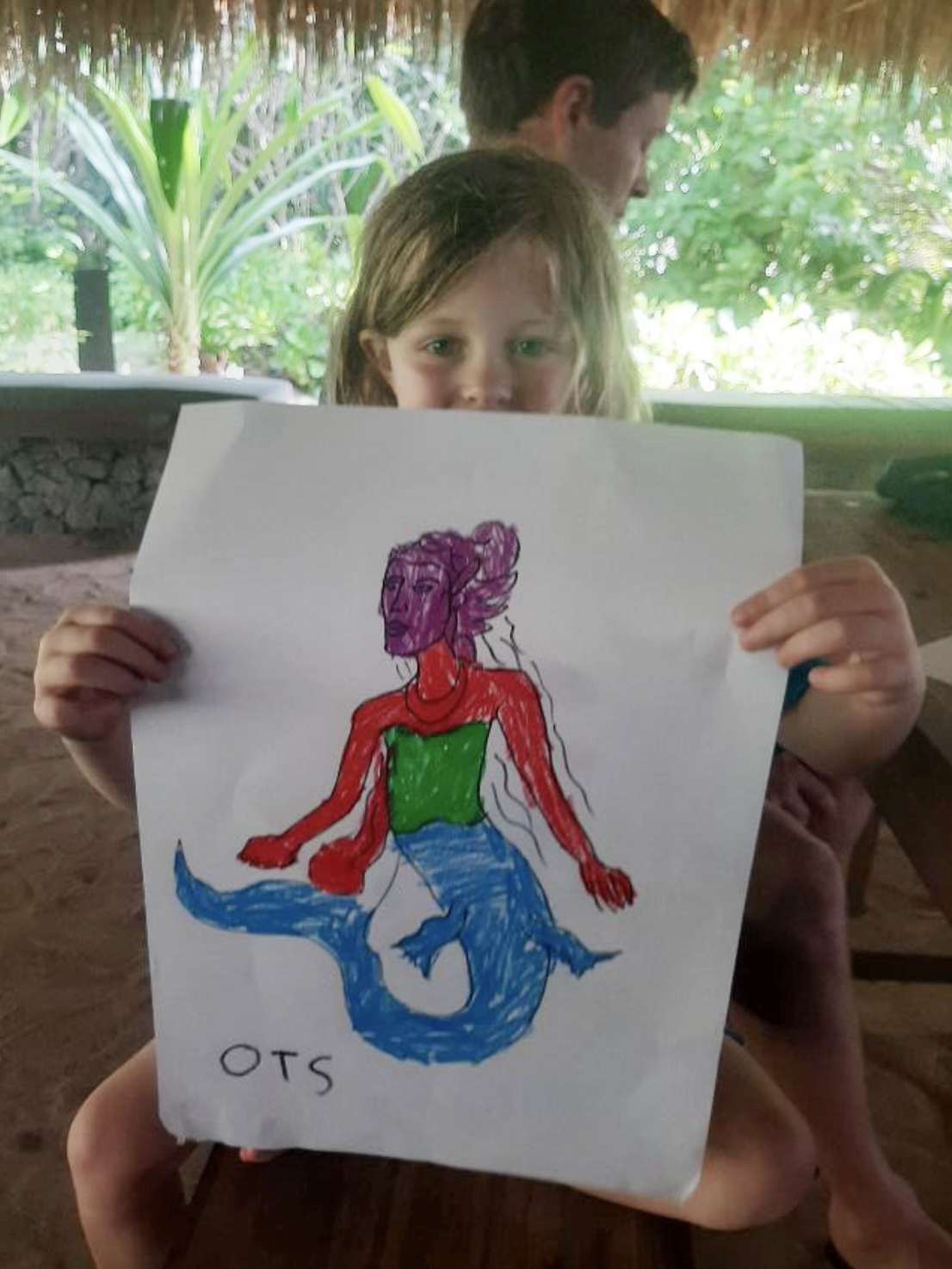
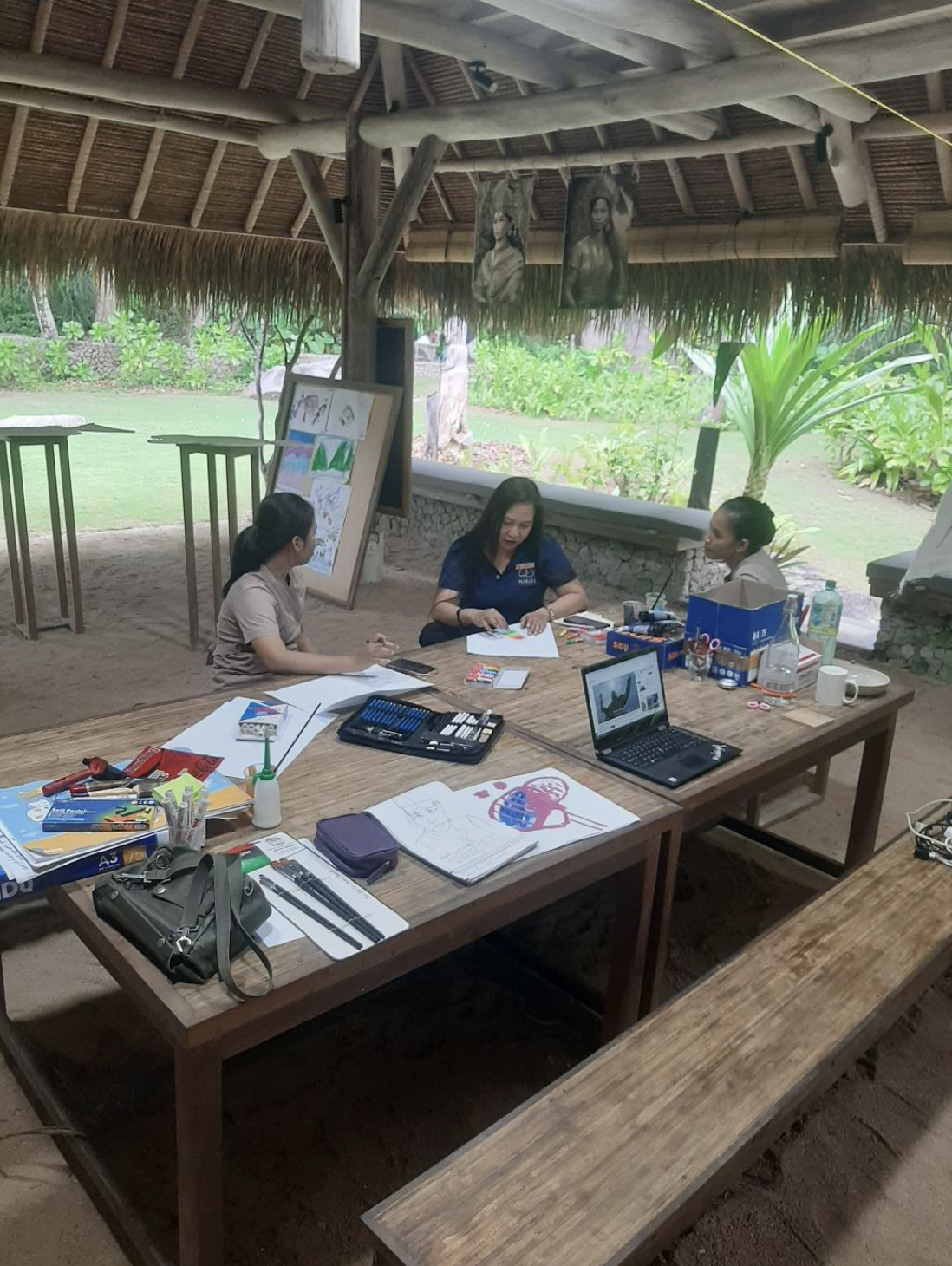
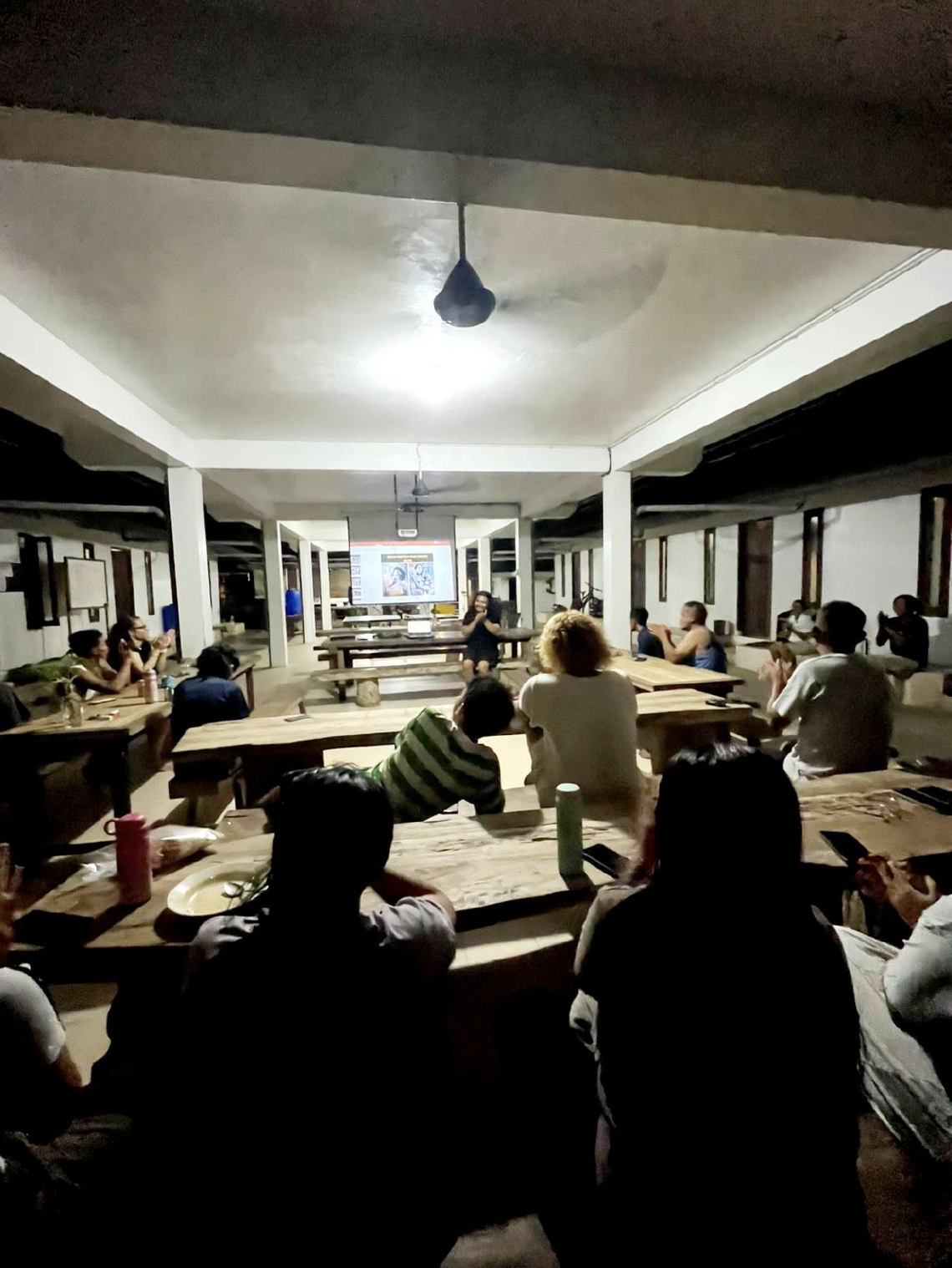


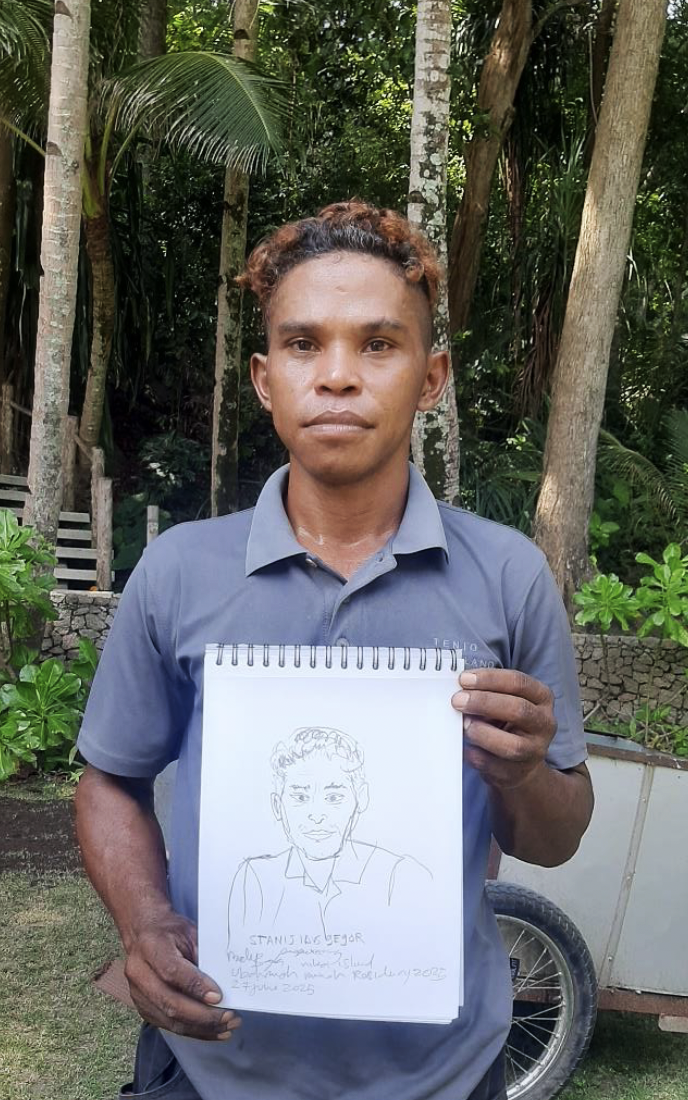
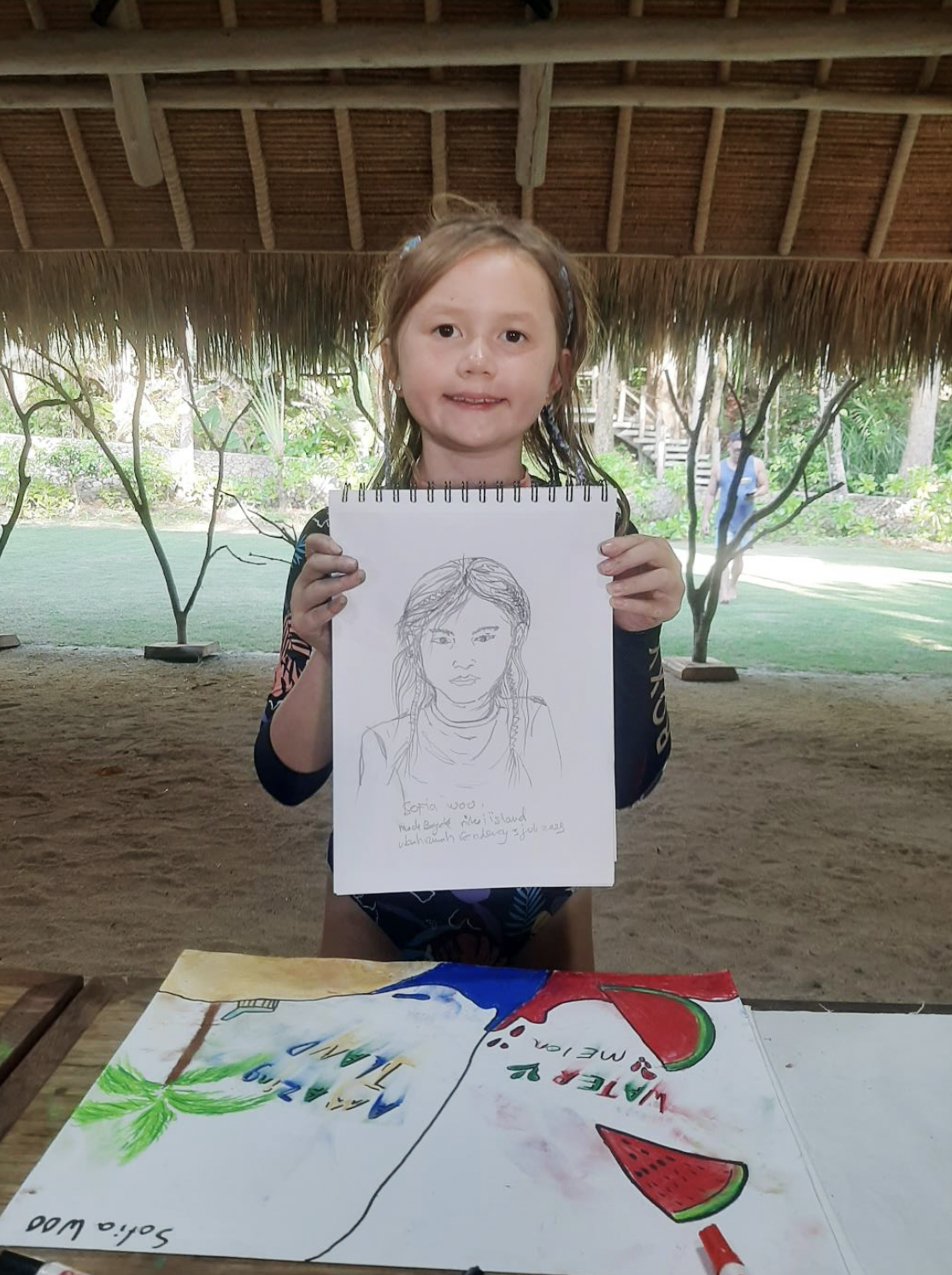

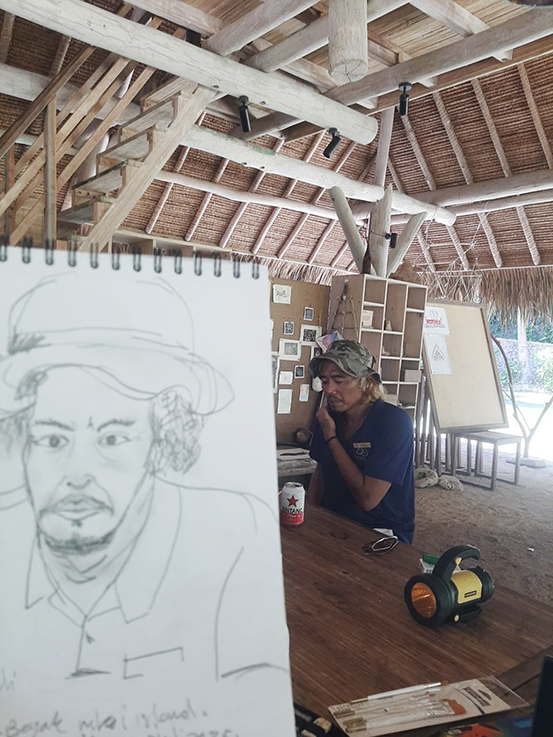
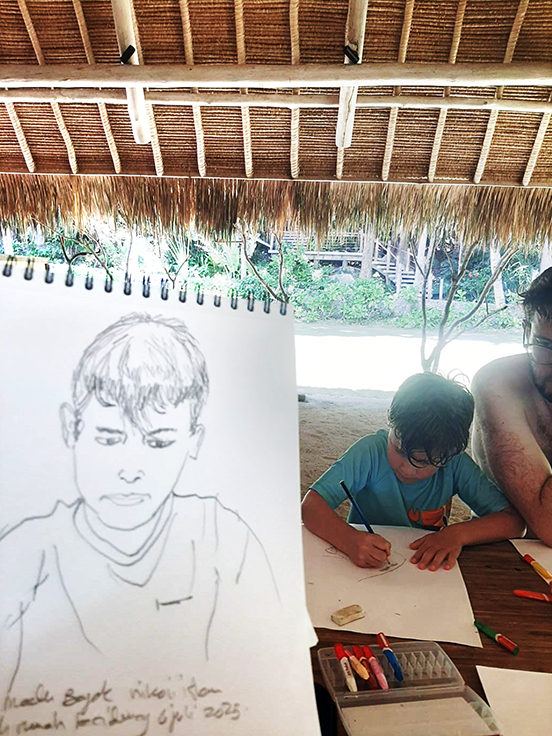

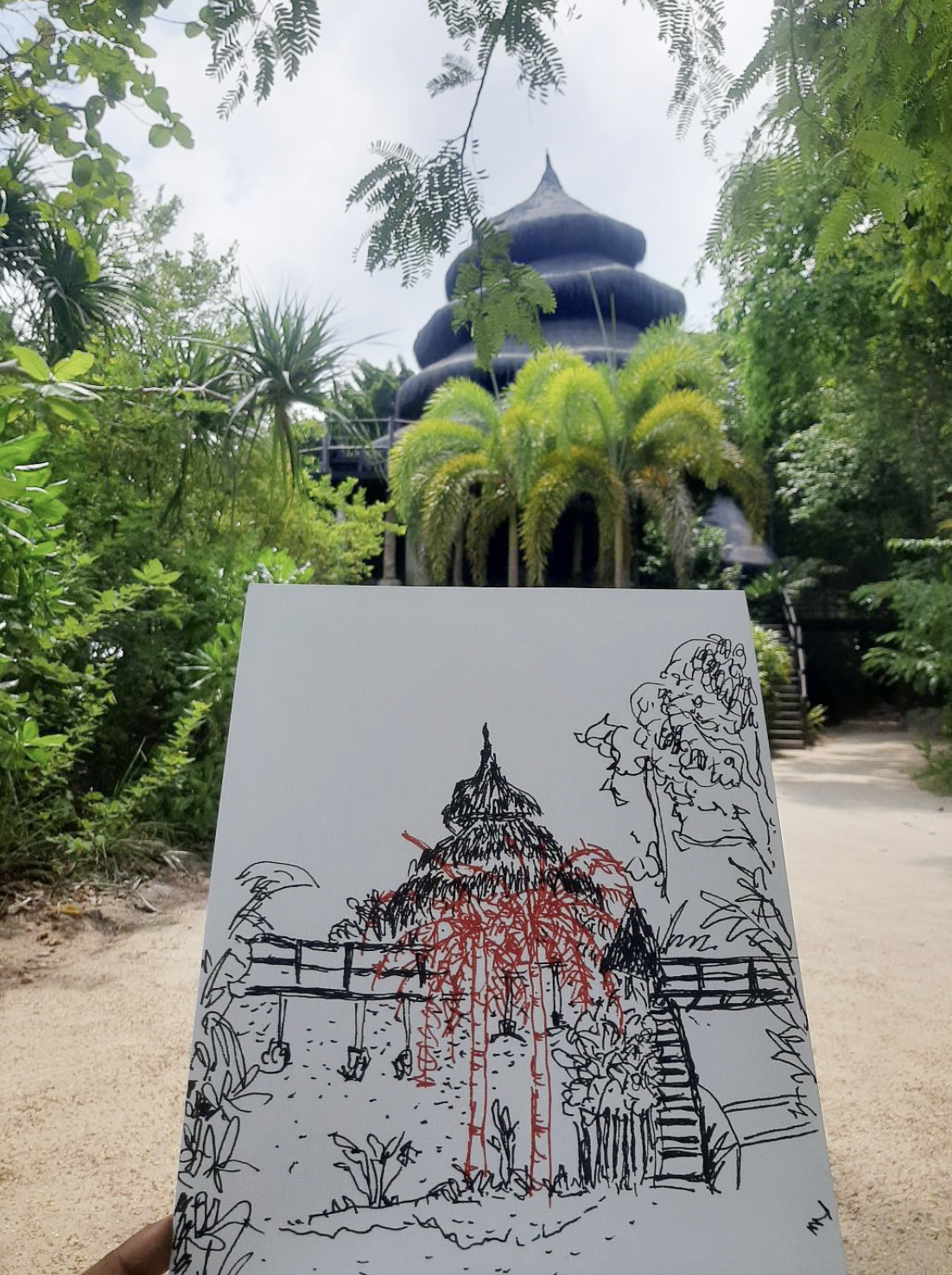
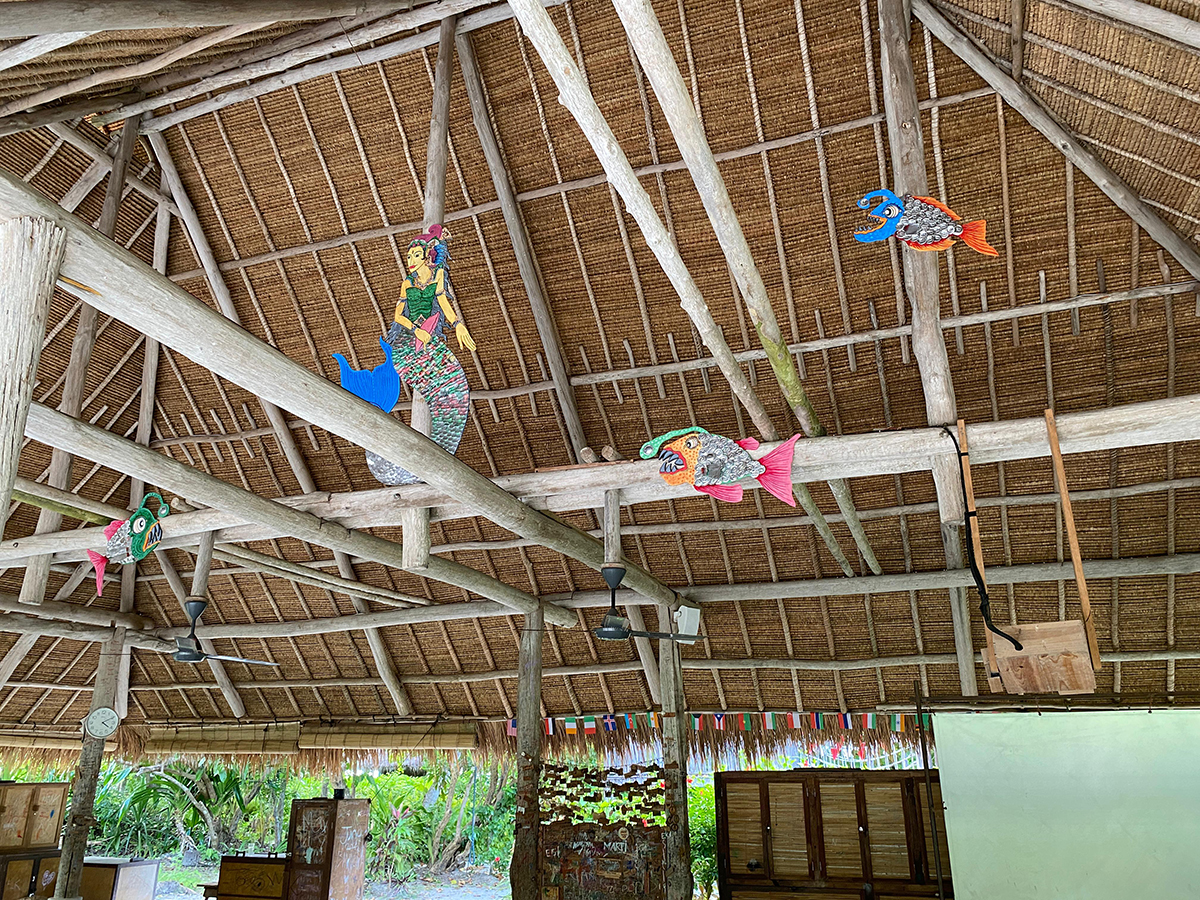
.jpg)







